
Limestone flooring – image kindly supplied by Indigenous
Stone wall and floor tiles provide a fabulous natural finish that’s hardwearing and easy to look after – but correct maintenance is really important. All stone tiles are sensitive to acid and many are porous too, so they need to be cleaned and protected with products that suit their natural characteristics. Luckily, these surfaces are pretty forgiving, so even tiles that have been neglected or maintained with the wrong solutions can be restored with the right products.
Refurbishing stone tiles
Stone tiles that haven’t been correctly protected or maintained tend to fall into one of two categories: there may be a build-up of organic residue, or the original sealant or stone itself may be etched from scuffing or the use of acid-based products.
Heavily soiled surfaces. To deep clean stone tiles, we recommend application of our LTP Grimex intensive cleaner. Floor tiles should be swept/vacuumed to remove dust and loose dirt and wall tiles should be lightly brushed to remove residue. Grimex should then be diluted 1:3 in warm water and applied liberally across the surface of the tiles. If necessary, tiles can be agitated with a scrubbing brush. The solution should then be left to react for 5-10 minutes and additional solution applied to keep the tiles wet, should it start to dry out. Lastly, the surface should be agitated again, the solution mopped or wiped up and the tiles should be rinsed thoroughly with clean water.
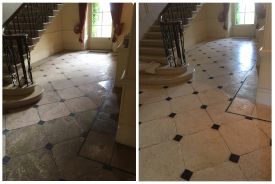
Damaged/etched surfaces. Stone that’s been damaged by scuffs or acid can be renovated by mild etching across the whole affected surface, to even it out, and then resealing with an enhancing impregnating sealer to restore depth of colour. We recommend using LTP Cement Grout & Salt Residue Remover to first even out appearance. The surface should then be cleaned and neutralised with LTP Grimex, before resealing with LTP Colour Intensifer & Stainblock. This process is explained in detail in our Stone Restoration Guide.
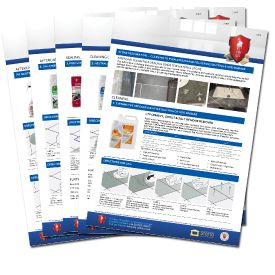
Sometimes, a specialist treatment may be needed to remove a specific stain, like cementitious grout, epoxy grout residue, oxidised linseed oil, paint or rust, and expert advice should always be sought. The LTP range includes a series of professional treatments formulated to safely remove these types of stain from stone surfaces.
Protecting stone tiles
Once heavily soiled tiles have been thoroughly cleaned, they will need to be protected against staining. This will also make ongoing maintenance easier. The best practice is the application of a water-based impregnating sealer, which will protect the surface without forming a film or altering appearance. A water-based, low VOC product will also provide the safest option, in terms of application and sustainability.
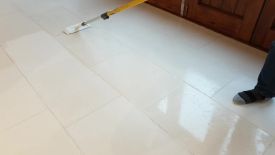
Historically, the molecules of a solvent or spirit-based sealer were smaller than water, so they tended to penetrate more quickly and deeply, which provided a better seal. This is no longer the case. Today, high-quality water-based sealers are equal to or superior to their spirit-based equivalents.
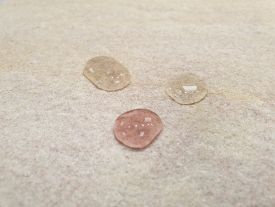
Applying a sealer
For indoor wall and floor tiles, we recommend either LTP Mattstone H2O for a completely natural finish or LTP Colour Intensifier & Stoneblock H2O which increases natural colour vibrancy. Both are applied generously onto clean, dry tiles. A foam roller or paint brush is recommended for rough cut, tumbled, textured or riven surfaces and a sealant applicator, lint-free cloth, lamb’s wool applicator or sponge for honed, smooth and polished stone.
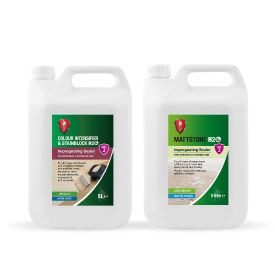
On very porous stone, further coats should be applied at hourly intervals until the surface is saturated; these tend to be the textured tiles, rather than the honed surfaces. On wall tiles, the sealer should be applied from the bottom up. Any excess should then be removed from all tiles after one hour with an absorbent towel or microfibre cloth; in very large areas, a buffing machine may be used.
In the case of highly porous encaustic tiles, if grout needs replacing as part of a renovation, we recommend sealing (clean tiles) both before and after grouting.
Topping up protection
Stone tiles may begin to show signs of wear and patches of ingrained dirt after around 3-5 years, depending on location and traffic. To top up protection, the tiles should be thoroughly cleaned with a deep cleaner like Grimex and the sealer re-applied.
Ongoing maintenance
Stone tiles should always be cleaned with a gentle pH-neutral detergent. We recommend LTP Waxwash for floors and LTP Stonewash for wall tiles. Both will thoroughly clean whilst protecting the newly applied sealer. A regular routine cleaning regime will make ongoing maintenance easier and will retain the stone’s aesthetic – and, in case of textured floor tiles, its slip resistance. Most stone surfaces will benefit from a wet clean around once a week.
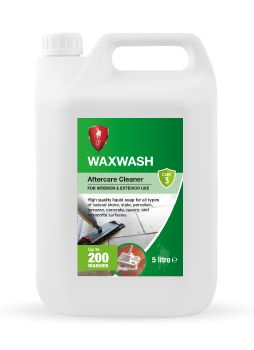
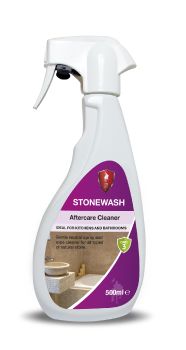
For more advice, please visit https://www.ltp-online.co.uk, call the LTP technical team on 01823 666213 or email [email protected]




